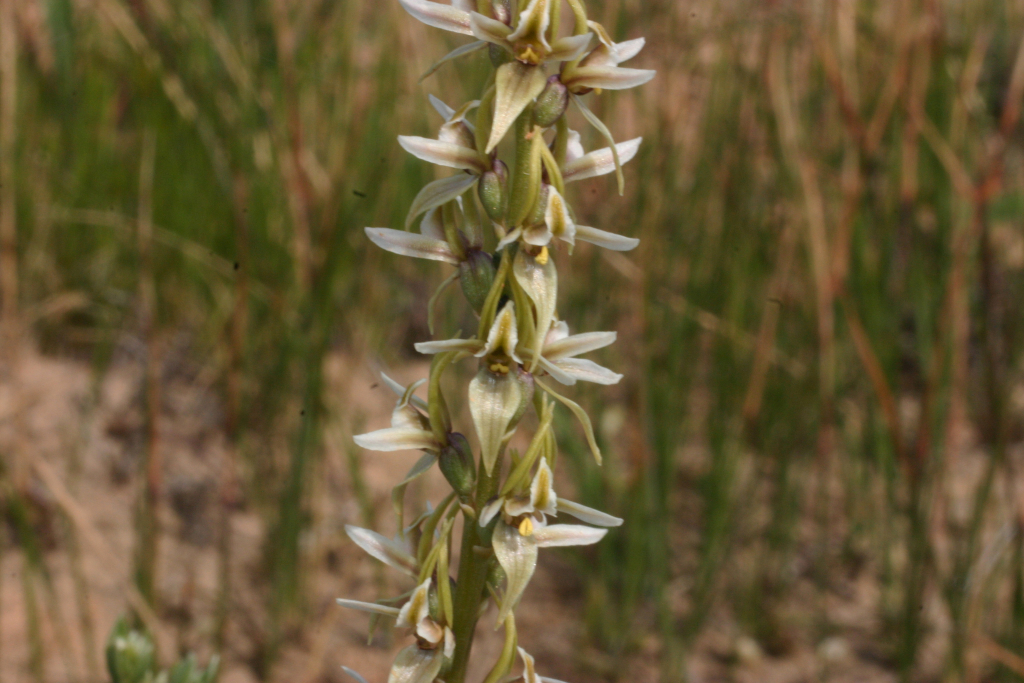Prasophyllum argillaceum
D.L.Jones & D.RouseFlowering stem slender, 15–30 cm tall. Leaf-blade to 20 cm long, 2–3 mm diam. at base, apex erect, senescent at flowering. Flowers 10–25, small, white, pale brown or reddish brown, scented, in a moderately crowded spike 6–15 cm long; ovary obovoid, to 3 mm long; sepals 4–5 mm long, dorsal sepal ovate-acuminate, lateral sepals free, lanceolate, recurved, parallel to divergent; petals linear, 4–5 mm long. Labellum subsessile, 4–4.5 mm long, reflexed through about 90 deg. near middle, often constricted above bend, lamina white, margins irregular; callus plate prominently raised, broad at base then tapered, extending almost to the labellum apex. Column appendages blunt, c. 1.5 mm long. Flowers Sep.–Oct.
VRiv. Endemic in Victoria where known only from a patch of remnant grassland/Eucalyptus camaldulensis grassy woodland on winter-wet clay soils near Wangaratta and perhaps Murchison (see note below).
Similar to Prasophyllum petilum from grassland habitats in NSW and the ACT, but has a denser inflorescence with more flowers, a more abruptly taperd labellum and blunt (rather than acute) column appendages.
Plants resembling P. argillaceum are known from similar, seasonally wet grassy woodland habitat near Murchison. They differ from P. argillaceum in having generally shorter, broader floral segments, more divergent lateral sepals and less spreading petals. While tentatively included here with P. argillaceum, the Murchison population is likely to be descriibed as a distinct species.
 Spinning
Spinning